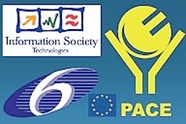An important feature of cellular self-organization is the interplay between self-assembly and evolution. We have discovered that genetic encoding of building blocks for self-assembly allows evolution to capture inductive features of the environment which allow general problem solutions to be evolved alongside specific solutions. We have tested these principles on evolvable circuit design and evolvable algorithm design.
Amphiphilic systems provide rich pattern forming capabilities based on self-assembly complementing reaction diffusion systems. We have developed novel models of evolving amphiphilic systems.
• Lattice models of amphiphiles with evolving combinatorial recognition
In addition to this modelling initiative we are extending our work on evolutionary pattern formation in stochastic and reaction-diffusion kinetic systems towards artifiical cells.


